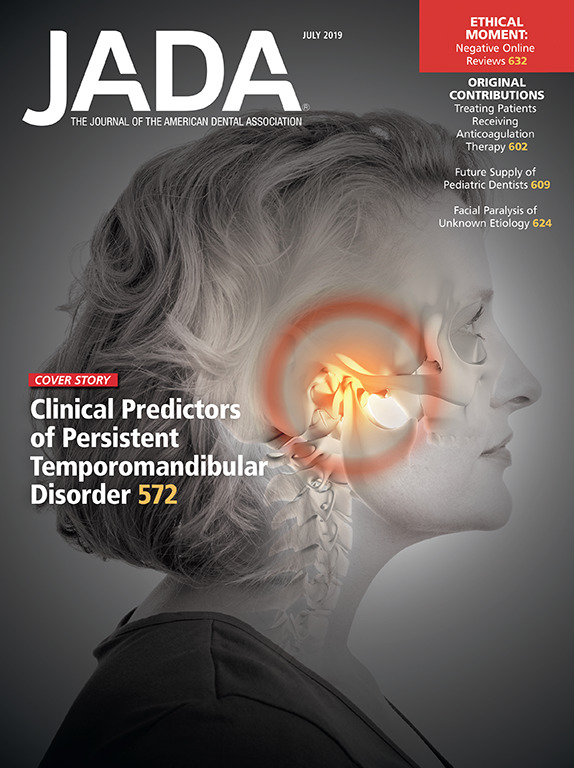Clinical clues may foretell chronic temporomandibular disorder
In Brief:
- Researchers found that pain-related clinical measures—but not psychosocial factors such as stress and negative mood—strongly predicted development of persistent temporomandibular disorder (TMD).
- These predictive measures might help clinicians identify the most at-risk patients and take steps to prevent or provide earlier treatment for chronic painful TMD.
TMD is the most common facial pain condition, affecting 5% to 12% of US adults. Because up to two-thirds of patients with TMD have jaw-related pain that lasts at least six months, it’s important to identify and treat those at high risk for persistent, or chronic, painful TMD. However, researchers had lacked clear evidence of clinical indicators that might identify patients most likely to have enduring pain associated with a TMD diagnosis.
Now a team of NIDCR-supported scientists report that they’ve identified several clinical symptoms and signs that can help predict whether TMD pain will linger and turn into chronic painful TMD. Among their findings: During a clinical exam, pain elicited by an examiner, and/or pain coupled with clicking or crunching sounds when opening the mouth or moving the jaw, may indicate a person is at increased risk of developing chronic TMD. The research, published in the July issue of the Journal of the American Dental Association, could help providers treat high-risk patients early to prevent the condition from progressing.
“A patient’s first visit to a provider for jaw-related pain is an important timepoint to assess whether pain is likely to be self-limiting or to persist,” says Richard Ohrbach, DDS, PhD, senior author and professor of oral diagnostic sciences at the University at Buffalo. “Our results identify simple clinical measures that can be easily obtained during that first consultation to determine whose pain may progress and to intervene early.”
The authors analyzed clinical data from 260 research participants at first diagnosis of a painful TMD and then eight months later. The research was part of the larger NIDCR-funded Orofacial Pain Prospective Evaluation and Risk Assessment (OPPERA) study, which followed nearly 3,000 initially TMD-free participants over several years to find out what causes the condition.
In the study published here, patients who developed chronic TMD were more likely to have a recent history of pain from jaw movement during activities such as eating or talking. They were also more likely to have muscle and joint pain elicited during an exam, as well as pain coupled with clicking or crunching sounds when instructed by an examiner to open the mouth or move the jaw back and forth. Using a mathematical model, the researchers found that these pain-related clinical measures strongly predicted chronic painful TMD.
While an earlier study showed that psychosocial factors such as pre-existing stress and negative mood predicted first onset of TMD, the researchers were surprised to find that these measures did not predict chronic painful TMD. Psychosocial distress may continue at the same level before and after TMD onset, so it may not offer any additional predictive value for chronic TMD, the authors suggest. Still, assessing patients’ psychosocial status at the time of clinical consultation remains important, because it could shed light on contributing factors and treatment options. The authors conclude that the predictive clinical signs and symptoms are easy for clinicians to measure and could help them provide care that is better tailored to a patient’s level of risk for chronic TMD.
Reference
Meloto, Slade, Lichtenwalter, Bair, Rathnayaka, Diatchenko, Greenspan, Maixner, Fillingim, Ohrbach. Clinical predictors of persistent temporomandibular disorder in people with first-onset temporomandibular disorder. JADA, July 2019, 150 (7): 572-581. PMID: 31248483
Related Links
- TMD (Temporomandibular Disorders)
- Neuroscience of Orofacial Pain & Temporomandibular Disorders Program
Attention Editors:
Reprint this article in your own publication or post to your website. NIDCR News articles are not copyrighted. Please acknowledge NIH's National Institute of Dental and Craniofacial Research as the source.


